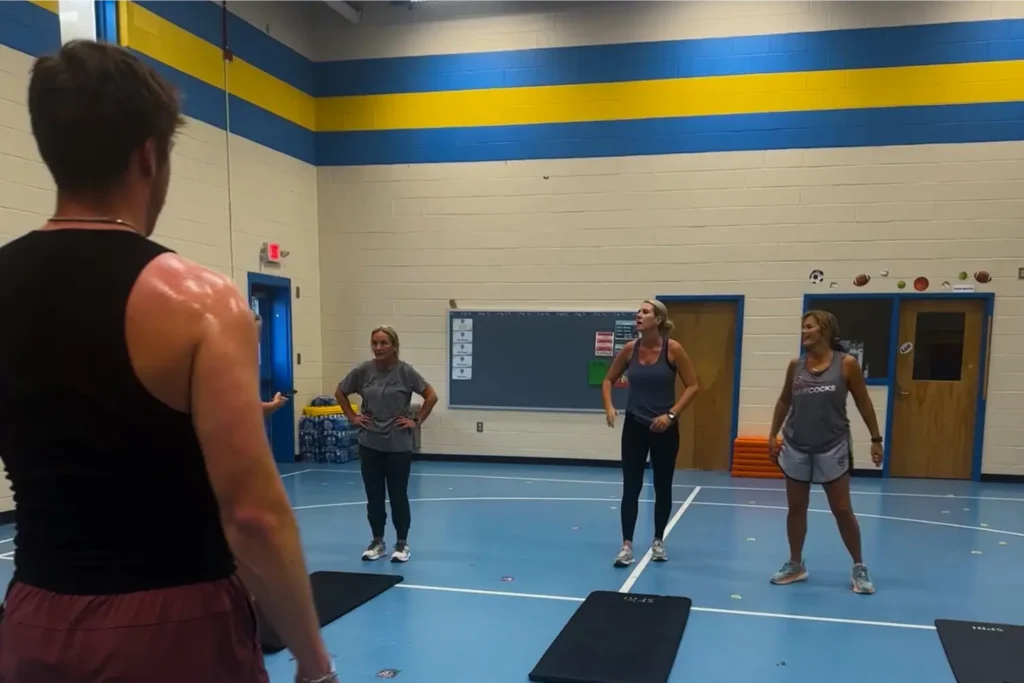Stretching is the unsung hero of a dancer’s routine. Whether you’re twirling in ballet or popping in hip-hop, your muscles need to be prepped and ready. And that’s where dynamic stretching comes into play. Unlike the old-school static stretches, dynamic stretching involves movement, making it perfect for dancers. But why is it so essential? Let’s dive in.
What is dynamic stretching?
Dynamic stretching is all about moving parts of your body gradually increasing reach, speed, or both. Think of it as gently waking up your muscles, and getting them ready for action. Instead of holding a stretch in place, you’re actively moving, which helps increase blood flow and improve your range of motion. This is particularly beneficial for dancers who need their bodies to respond quickly and efficiently.
Benefits of dynamic stretching for dancers
- Improves flexibility: Flexibility is key for dancers. Dynamic stretching helps lengthen your muscles and increase your range of motion, allowing for those beautiful extensions and high kicks.
- Enhances performance: By warming up your muscles and joints, dynamic stretching primes your body for peak performance. You’ll find yourself moving more fluidly, with better coordination and less effort.
- Reduces risk of injury: Dynamic stretching prepares your muscles for the demands of dancing. By gradually increasing the intensity of the movements, you reduce the risk of strains and sprains, keeping you on your feet and dancing.
When to incorporate dynamic stretching in your routine
- Pre-dance warm-up: Start your dance session with a dynamic stretching routine to get your muscles ready for the movements ahead.
- During rehearsals: Use dynamic stretches between choreography segments to keep your body warm and responsive.
- Before performances: Make dynamic stretching a part of your pre-performance ritual to ensure your body is fully prepared to shine on stage.
Essential dynamic stretches for dancers
- Arm Circles: Great for warming up your shoulders and arms, crucial for all those lifts and holds.
- Leg Swings: These help loosen up your hips and legs, perfect for high kicks and jumps.
- Hip Circles: Loosens up the hips, which are the center of many dance movements.
- Lunges with a Twist: Engages the lower body and adds a rotational element to warm up the core.
- Torso Twists: Essential for warming up the spine and increasing rotational mobility.
Dynamic stretching routine for beginners
If you’re new to dynamic stretching, start with this simple routine. Begin with gentle arm circles, move on to leg swings, then incorporate hip circles, lunges with a twist, and finish with torso twists. Aim for 10-15 reps of each movement, focusing on smooth, controlled motions. This routine should take about 10-15 minutes and is perfect for easing into a more comprehensive stretching regimen.
Advanced dynamic stretching for experienced dancers
For those who have mastered the basics, it’s time to step it up. Incorporate more complex movements like deep lunges with overhead reaches, high leg swings, and full-body rotations. These advanced stretches not only increase flexibility but also build strength and endurance, helping you perform more challenging dance routines with ease.
Remember, the goal is to gradually increase your range of motion, not to force it. Pushing too hard can lead to injury. And keep in mind to pay attention to your form. Poor technique can reduce the effectiveness of the stretch and increase the risk of injury. If you need more fitness tips, take a look at our blogs for expert advice.
Final thoughts
Dynamic stretching is an essential part of a dancer’s routine. It not only improves flexibility and performance but also reduces the risk of injury. By incorporating a well-rounded dynamic stretching routine into your daily practice, you’ll be better prepared to take on the demands of dance. So, take the time to stretch dynamically, and your body will thank you on the dance floor.





